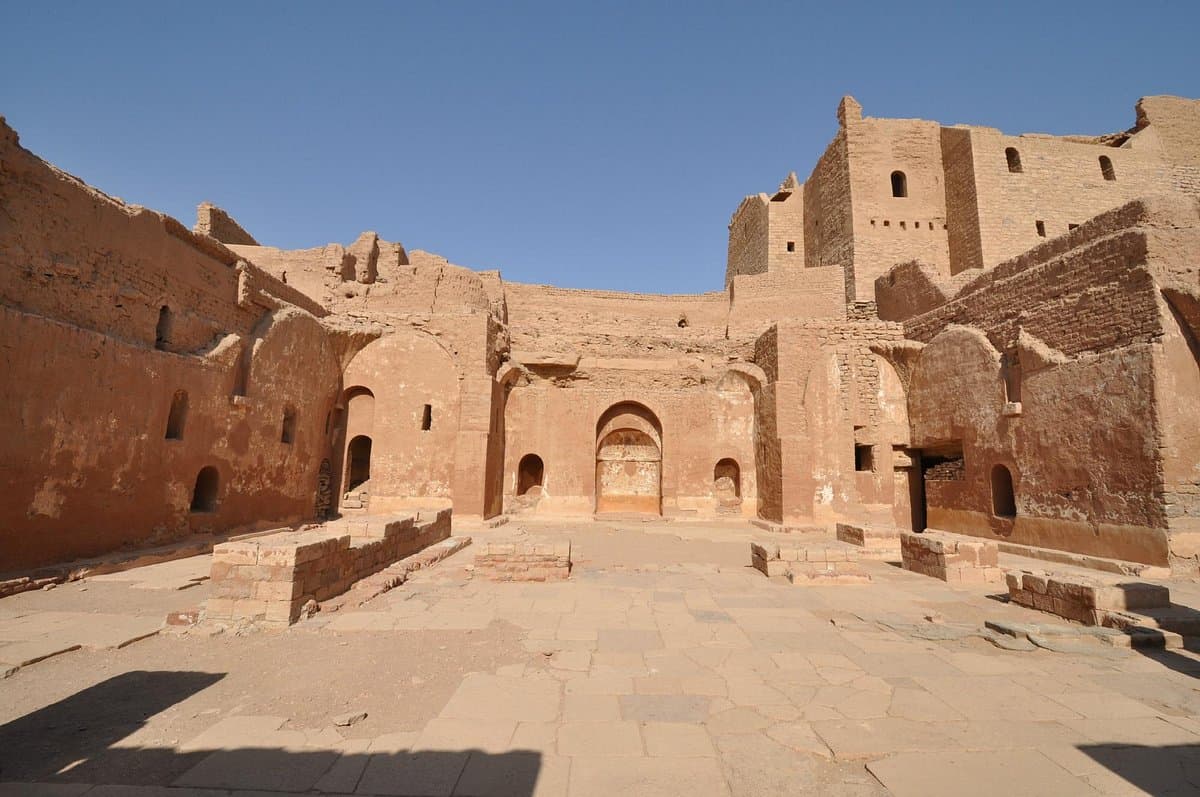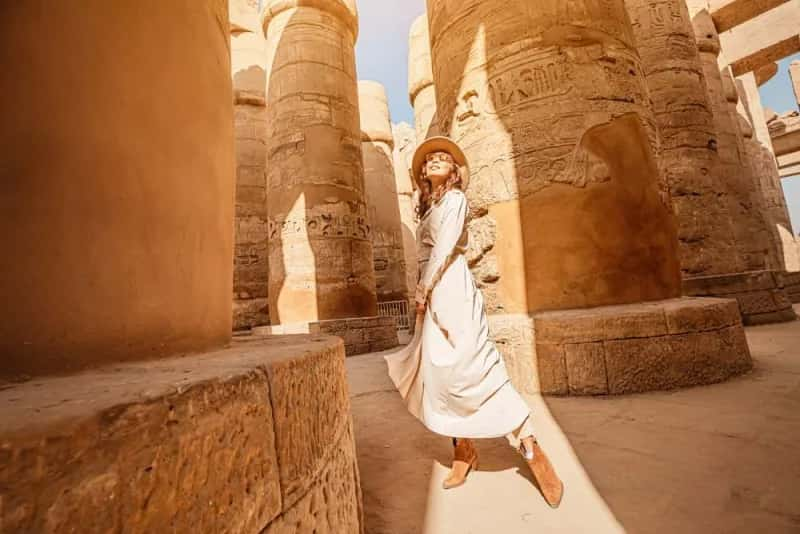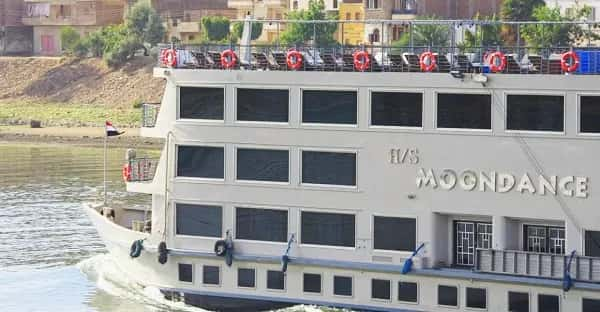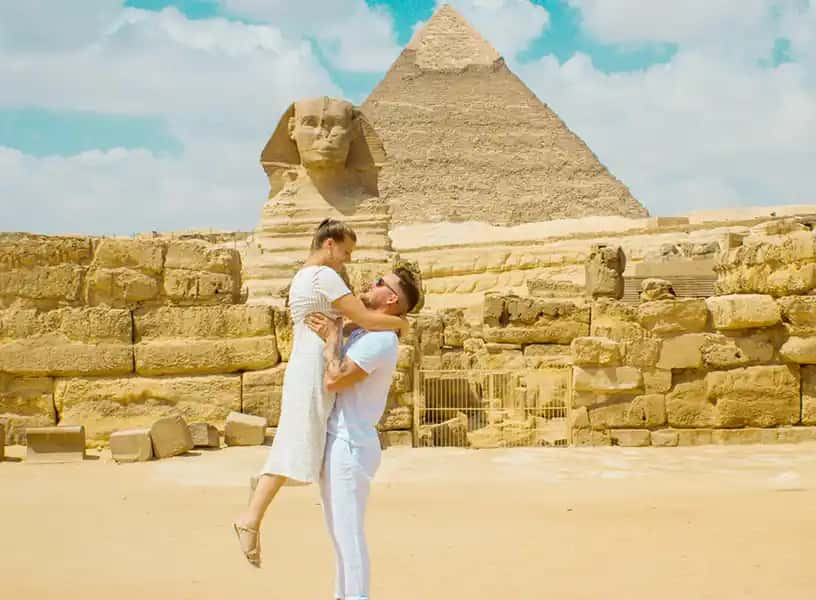
Nestled on the west bank of the Nile, near Aswan, Egypt, the Monastery of St. Simeon, also known as Saint Simeon Monastery, stands as a beacon of ancient history and spiritual dedication. Its walls, echoing the lives of monks from as early as the 7th century, invite you to explore a treasure trove of Christian heritage in the heart of Egypt. This site, with its unique blend of natural beauty and historical significance, has captivated visitors and pilgrims alike, making it an essential destination for anyone interested in the rich tapestry of Egyptian Christian history.
As you delve into this article, you'll unearth the fascinating history of the monastery, marvel at its architectural wonders, and step into the daily lives of monks who called this desert gem their home. From the enduring art and inscriptions that adorn its walls to its pivotal role in Christian Egypt, the Monastery of St. Simeon offers a rare glimpse into a past world. Whether you're planning a visit or indulging your curiosity from afar, this guide promises to enrich your understanding and appreciation of one of Aswan's most revered historical sites.
The Monastery of St. Simeon, originally known as Anba-Hatra, traces its origins back to the 6th century, a period marked by the flourishing of Christian monasticism in Egypt. Named after Anba Hatre, an ascetic who later became a bishop of Syene (now Aswan), the monastery's history is a testament to the region's rich spiritual and cultural tapestry.
Today, the ruins of the Monastery of St. Simeon stand as a significant historical and tourist site, offering insights into the monastic life and Christian heritage of ancient Egypt. Its legacy continues to attract scholars and visitors, eager to explore its past and the stories encapsulated within its walls.
The Monastery of St. Simeon, a testament to ancient Coptic architectural ingenuity, is strategically built on two natural terraces, divided by a continental cliff. This layout not only provides a clear distinction between the sacred and the communal areas but also showcases a sophisticated use of the natural landscape for structural and defensive purposes.
Dual-Terrace Design:
Church Architecture: Constructed in the first half of the 11th century, the church is one of the earliest examples of domed Egyptian churches, featuring two domed bays and a unique rectangular sanctuary.
Defensive and Residential Structures: The monastery's keep, or tower, is a three-story structure that includes essential living spaces such as cells, a refectory, and a kitchen, highlighting the monastery's self-sustaining design.
Despite the absence of natural water sources within the vicinity, the monastery showcases an advanced water management system. The remnants of plumbing devices indicate a sophisticated network that supplied water to the upper terrace, supporting essential facilities like bathrooms, toilets, and laundries.
The keep, or qasr, is not just the largest structure within the monastery but also the most developed of its kind in ancient Coptic architecture. It represents the climax of monastic architectural development, with its multi-storied design providing a comprehensive view of monastic life from living quarters to communal eating areas and spiritual spaces.
The architectural marvels of the Monastery of St. Simeon stand as a significant educational resource, offering insights into the engineering prowess and artistic vision of its creators. Despite enduring over 700 years without major repairs, the structure's resilience and the ongoing preservation efforts help maintain its status as a crucial link to Egypt's Coptic Christian past.
This detailed architectural analysis not only underscores the monastery's historical and religious significance but also highlights its role as a beacon of ancient innovation and communal living. The Monastery of St. Simeon remains a profound study in the balance between functionality and spiritual significance, making it a pivotal site for both historical and architectural studies.
Imagine rising with the sun, well before dawn breaks over the horizon. This is the start of a typical day for a monk at the Monastery of St. Simeon, beginning around 4 am with the first prayer of the day. The monastery, once home to 300 monks and capable of accommodating 100 guests, buzzed with a rhythm of devotion and communal living that has echoed through the ages.
The monks' day was structured around seven prayer services, starting at dawn and concluding at dusk. These gatherings were not just spiritual checkpoints but the backbone of daily life, fostering a community bound by faith and discipline.
In between these prayer services, the monks dedicated themselves to various activities essential for the monastery's self-sufficiency and their spiritual growth. They engaged in studying religious texts, which was considered both a duty and a form of worship. Manual labor, another significant aspect of their day, included tending to the gardens, caring for livestock, and maintaining the monastery's infrastructure. This blend of intellectual and physical work ensured that their community was not just spiritually enriched but also practically sustained.
Mealtime was a quiet affair, marked by simplicity and reflection. The monks ate together in silence, a practice aimed at deepening contemplation and mindfulness. During meals, one monk read aloud from a religious text, filling the refectory with words of scripture as they nourished their bodies with simple, vegetarian meals consisting mainly of bread, vegetables, and legumes.
Living under a vow of poverty, the monks owned little. Their lives were examples of austere simplicity, focused on spiritual richness rather than material wealth. This simplicity was a conscious choice, reflecting their commitment to a life devoted to spiritual pursuits over temporal concerns.
The heart of communal life was the refectory, a large room originally divided by columns and roofed with cupolas. Here, the monks gathered for their silent meals, surrounded by the austere beauty of their environment. Flanking this central space was a series of cells, modest in size, where each monk retired for private prayer and reflection. These cells, simple and unadorned, were the personal sanctuaries of the monks, supporting their solitary meditative practices.
Interestingly, the monastery also served as a temporary home for Muslim pilgrims traveling to Mecca. The last room on the right, marked by graffiti, stands as a testament to these historical interactions, highlighting a place where cultures and faiths intersected.
The daily life of monks at the Monastery of St. Simeon was a profound expression of faith, discipline, and community living. It offers a fascinating glimpse into how an ancient spiritual community thrived in the harsh desert environment, guided by the rhythms of prayer, work, and communal living.
The Monastery of St. Simeon is not only a historical site but also a canvas displaying rich Coptic art that offers a profound insight into the religious and cultural ethos of its time. The walls of the monastery are adorned with various forms of artwork, from paintings to inscriptions, each telling a unique story of faith and tradition.
The monastery's art extends beyond paintings to include intricate iconography that illustrates biblical scenes, saints, and other religious figures. These icons serve not just as decoration but as tools for spiritual instruction and veneration.
Inscriptions: A Linguistic Tapestry
The walls of the Monastery of St. Simeon also serve as a historical document, bearing inscriptions in Coptic, Greek, and Arabic. These writings provide invaluable insights into the monastery's past, revealing details about its inhabitants, their thoughts, and the era's socio-religious context.
Coptic and Greek Texts: These primarily detail religious texts and prayers, reflecting the theological focus of the monastery's inhabitants.
Arabic Inscriptions: These inscriptions are particularly fascinating as they indicate a period of cultural exchange and the coexistence of Christian and Muslim communities.
The last room on the right holds a special historical significance with graffiti left by Muslim pilgrims. This unique feature marks the monastery as a place of intersection between different faiths and cultures, emphasizing a shared journey despite religious differences.
Through these artistic and written expressions, the Monastery of St. Simeon not only preserves the spiritual and cultural life of its era but also offers a bridge to understanding the complex tapestry of historical interrelations in Christian Egypt. The ongoing study and preservation of these artworks and inscriptions continue to enrich our understanding of the past, making the monastery a pivotal site for both historical and cultural studies.
The Monastery of St. Simeon not only stands as a monument of profound historical and architectural significance but also embodies the rich spiritual heritage of Coptic Christians in Egypt. Here's how this ancient site has cemented its importance in the Christian landscape of Egypt:
Religious Significance
The monastery is deeply revered by Coptic Christians. It is dedicated to St. Simeon, who is venerated as the patron saint of ascetics and spiritual seekers. This makes the monastery a focal point for those pursuing a life of contemplation and solitude, drawing visitors not only for its historical value but for spiritual enrichment.
Strategic Cultural Hub
Located along major trade routes, the Monastery of St. Simeon became a thriving center for Christian worship and communal living. Its strategic position facilitated significant cultural exchanges and fostered a community that was vibrant in religious and educational pursuits. This aspect of the monastery highlights its role in promoting Christian learning and spirituality during its peak periods.
Testament to Religious Diversity
The Monastery of St. Simeon serves as a testament to Egypt’s religious diversity. It stands as a repository of spiritual and ascetic practices from the early medieval period, offering a window into the religious practices and communal life of that era. This diversity is also reflected in the inscriptions found on its walls, written in Coptic, Greek, and Arabic, showcasing a melting pot of cultures and religions.
Preservation of Christian Heritage
As a significant cultural and historical site, the monastery reflects the rich history of Christianity in Egypt. It offers visitors a glimpse into the life of early Christian monks, preserving the legacy of these religious communities. The well-maintained site allows for ongoing educational opportunities and cultural appreciation, ensuring that the history of Coptic Christians continues to be recognized and valued.
Symbol of Endurance and Legacy
The continued existence and maintenance of the Monastery of St. Simeon are poignant reminders of Egypt's rich cultural and religious history. They symbolize the enduring legacy of Coptic Christians and their contributions to the spiritual and cultural fabric of the region. This enduring presence makes the monastery a key historical and spiritual site, revered not just in Egypt but globally among scholars and spiritual seekers alike.
The Monastery of St. Simeon, through its profound historical, cultural, and religious significance, continues to be a beacon of Christian heritage in Egypt, offering insights and inspiration to all who visit.
San Simeon Monastery Today
Today, the Monastery of St. Simeon in Aswan remains a beacon for those fascinated by history, culture, and architecture. Despite its ancient roots and the challenges posed by time and isolation, the monastery continues to attract visitors from around the globe, drawn by its historical significance and unique location.
Opening Hours: The monastery welcomes visitors daily from 8:00 AM to 4:00 PM.
Admission Fees: Entry costs EGP 25 per person, making it an affordable destination for tourists and scholars alike.
Getting There: To reach the monastery, you can take a private boat across the Nile and follow the mostly paved desert track. Alternatively, for a more adventurous route, you can take the ferry to the Tombs of the Nobles and ride a camel or donkey from there.
Location: It is situated on the western bank of the Nile, approximately 1 kilometer into the desert from the boat dock. The walk up to the monastery takes about 30 minutes, but hiring a camel and guide at the boat dock can offer a unique experience.
Ongoing preservation efforts are crucial in maintaining the structural integrity and historical artifacts of the monastery. These efforts ensure that the monastery not only survives as a physical structure but also continues to serve as a valuable educational resource for understanding the region's Christian and Muslim heritage.
Exploration: Visitors can explore the crumbling walls and appreciate the echoes of centuries of worship within its confines. Climbing the monastery's roof offers panoramic views of the Nile River and the surrounding desert landscape, providing a perfect backdrop for photography and contemplation.
Cultural Significance: The monastery serves as a significant site for both Christian and Muslim visitors, highlighting its role in the historical and cultural tapestry of Egypt.
Preparation: Remember to bring water and suitable sun protection, as the desert environment can be harsh, especially during the summer months.
Cultural Respect: As you explore, keep in mind the spiritual and historical significance of the site. This respect will enrich your experience and help preserve the site for future generations.
The Monastery of St. Simeon stands as a testament to the enduring legacy of religious devotion and architectural ingenuity. Its ongoing appeal as a tourist destination underscores its importance not just in Christian and Egyptian history, but as a cultural bridge in a diverse world.
Getting There
Visiting the Monastery of St. Simeon offers a unique blend of adventure and spirituality. You can reach the monastery by various means:
To make the most of your visit, timing is key. The ideal months to visit are between November and February, when the weather is cooler and more temperate, making the exploration of the desert site more comfortable.
Admission Details
Tour Options
Duration and Availability: Tours typically last about 4 hours and are available daily.
Inclusions: Tours often include a camel ride, an English-speaking Egyptologist guide, entrance fees, and transfers by a modern air-conditioned vehicle, along with bottled water for hydration.
Visitor Etiquette
When visiting, it’s important to respect the cultural and historical significance of the monastery:
Safety and Comfort
Combining Attractions
Maximize your trip by visiting nearby attractions:
Visiting the Monastery of St. Simeon not only offers a peek into ancient monastic life but also provides a serene escape from the bustling world. With these tips, your visit can be both enjoyable and enlightening, ensuring you take home not just photos, but also cherished memories.
Explore the Rich Surroundings
When you visit the Monastery of St. Simeon, you're also stepping into a region brimming with historical treasures. Here’s a guide to some must-see attractions nearby:
Just a stone's throw away from the monastery, Elephantine Island beckons with its rich archaeological sites. You can explore ancient temples and the Aswan Museum, which offers a deep dive into the area's history. While entry to the island is free, specific sites and museums might charge a fee.
A short boat ride will take you to the enchanting Philae Temple on Agilkia Island, dedicated to the goddess Isis. It's a breathtaking sight, especially during the early hours from 7:00 AM to 5:00 PM. The entrance fee is 120 EGP per person.
Discover the secrets of ancient Egyptian stone-carving techniques at the Unfinished Obelisk located in the northern granite quarry. It's a fascinating insight into the monumental tasks undertaken by ancient builders. Entry costs 60 EGP per person.
For a change of pace, visit the tranquil Aswan Botanical Garden on Kitchener's Island. It’s a lush escape featuring a variety of exotic plants and trees. The garden charges an entry fee of 30 EGP per person.
Delve into the rich culture and history of Nubia at the Nubian Museum, just a short distance from the monastery. It’s home to a vast collection of artifacts and exhibits, with an entrance fee of 100 EGP per person.
Further afield, the impressive Kalabsha Temple stands about 9.28 miles from Aswan. This Ptolemaic and Roman structure offers a glimpse into the religious life of ancient civilizations.
Nearby, the Tombs of the Nobles are located just over a mile from Aswan. These tombs provide a unique view into the lives of the governors who ruled the southern frontier of ancient Egypt.
Aga Khan Mausoleum
Close to the Tombs of the Nobles, the Aga Khan Mausoleum is the resting place of Mohammed Shah Aga Khan III. It’s a serene site reflecting the spiritual and cultural heritage of the Ismaili sect.
Each of these attractions offers a unique perspective on the rich historical tapestry of Aswan and its surroundings. Whether you're interested in ancient history, botanical beauty, or cultural heritage, there’s something nearby to enrich your visit to the Monastery of St. Simeon.
Through the exploration of the Monastery of St. Simeon, we've traversed centuries of religious devotion, architectural prowess, and cultural intersection. The monastery, a cornerstone of Coptic Christian heritage in Egypt, reveals the enduring spirit of monastic communities that thrived in the desert's austerity. Its archaeological and architectural marvels offer a tangible connection to the ascetic lives led by its inhabitants, while the artistic endeavors captured in frescoes and inscriptions echo the vibrant spiritual and cultural exchanges that took place within its walls. This journey through the monastery not only enriches our understanding of ancient Christian monasticism but also underscores the site's significant role in preserving a unique facet of Egypt's diverse cultural and religious history.
Maintaining the integrity of the insights shared throughout this article, it becomes evident that the Monastery of St. Simeon is not merely an historical anomaly but a beacon of unity in diversity, standing testament to centuries of shared human experience and devotion. The call to protect and study such monuments goes beyond an academic pursuit; it is a call to acknowledge our shared heritage and the enduring legacy of faith and coexistence they represent. As the monastery continues to attract visitors and scholars alike, it serves as a poignant reminder of our collective past and the indelible mark of spirituality and communal life in shaping human civilization.
What are the directions to the Monastery of St. Simeon in Aswan?
The Monastery of St. Simeon is located on the west bank of the Nile, opposite Elephantine Island in Aswan. To get there, you can hire a ferry to cross the Nile and then choose to ride a camel, walk, or cycle up the hill to the monastery. The cost for this journey is typically around LE 150.
Which monastery can be found near Aswan?
Near Aswan, you can visit the ruins of the Monastery of Saint Simeon, also known as the Anba Hatre Monastery. This 7th-century site is one of the oldest and most well-preserved examples of a domed oblong church in Egypt and can be reached by a short ferry ride or a slightly longer car journey from Aswan.
Why is Aswan a notable destination?
Aswan is celebrated for its enchanting Nile Valley landscapes, rich archaeological sites, and tranquil ambiance. It is a popular winter getaway due to its warm climate throughout the year. Visitors can enjoy breathtaking views and attractions, including sailing on the Nile in a traditional felucca (Egyptian sailboat).
Where is St. Simeon Monastery located?
St. Simeon Monastery is situated in Aswan, Egypt, on the western bank of the Nile. It's about a kilometer (1/2 mile) into the desert from the boat dock, offering a serene escape into historical splendor.
When was St. Simeon Monastery built?
The monastery was established in the 7th century, making it a significant historical site with centuries of Christian heritage.
How many monks lived in St. Simeon Monastery at its peak?
At its peak, St. Simeon Monastery was home to around 300 monks. It was also equipped to accommodate up to 100 guests, reflecting its importance as a religious and cultural hub.
What is the current state of St. Simeon Monastery?
Today, St. Simeon Monastery stands as an impressive ruin. It continues to attract visitors from around the world, drawn by its historical significance and architectural beauty.
What are the admission fees for St. Simeon Monastery?
The admission fee to visit St. Simeon Monastery is EGP 25 per person, making it an accessible site for those eager to explore its ancient wonders.
What are the opening hours for St. Simeon Monastery?
The monastery is open to visitors daily from 8:00 AM to 4:00 PM, providing ample time to explore and appreciate its historical context.
How can I reach St. Simeon Monastery?
You can reach the Monastery of St. Simeon by taking a private boat across the Nile, followed by a short walk or camel ride into the desert. This journey adds to the overall experience, allowing you to enjoy the scenic beauty of the area.
What is the significance of St. Simeon (Anba Hatre)?
St. Simeon, also known as Anba Hatre, is revered as a patron saint of ascetics and spiritual seekers. The monastery dedicated to him is a focal point for those pursuing a life of contemplation and solitude.
What is the best time to visit St. Simeon Monastery?
The best time to visit St. Simeon Monastery is between November and February when the weather is cooler. This makes exploring the desert site more comfortable and enjoyable.
“In my opinion, I believe a good writer makes content easy to read, and entertains the reader, making comprehension effortless.
By Kate Clark
Book this Egypt Budget Tour and enjoy 8 days Cairo and Nile cruise tour package at the best price with 5 star quality ac ...
$ 1139 | Per Person

Sail the nile between Luxor and Aswan onboard MS Mayfair Nile cruise and don't miss out on the best travel experience in ...
$ 699 | Per Person

Cruise the Nile aboard the MS Moon Dance with its modern 5-star luxury design & sails and Visit the best attractions on ...
$ 599 | Per Person
-1.webp.webp&w=3840&q=60)
This Egypt Itinerary 8 Days Cairo and Nile cruise package is the best Egypt tour travelers book. Visit the best of Egypt ...
$ 1299 | Per Person

A romantic Egypt Honeymoon Trip. Visit the Pyramids and Sphinx with Nile cruise adventure in Luxor and Aswan watching li ...
$ 999 | Per Person